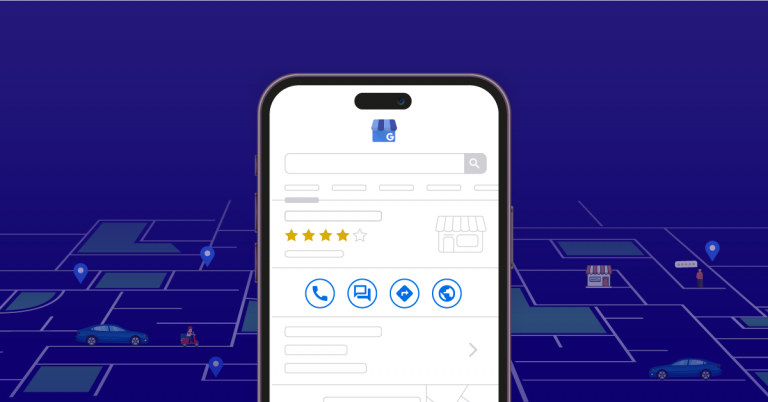Most growth-focused businesses are optimizing and tweaking ad performance at the brand level, refining supply chains, and reallocating budgets. But there’s one area still flying under the radar: local market intelligence.
While your national campaigns are data-driven and your dashboards packed with metrics, there’s a blind spot where opportunity quietly slips away: what’s happening at the street level, i.e, in individual stores, neighborhoods, or clusters.
Most market trends don’t show up first in reports. They show up in customer questions, subtle changes across reviews, and the words people use when they call your stores. Sometimes, it’s as simple as a product being mentioned more often in one zip code than another.
That’s where AI-powered local market insights come in. By connecting the dots across data that usually stays siloed, you can move from a generalized plan to smart business actions grounded in what’s happening, location by location.
You’re likely tracking plenty of store performance, campaign ROI, and review ratings. The data’s there. But if you’re relying on high-level reports or summary dashboards, you’re mostly looking in the rearview mirror.
The bigger issue? You don’t always see what’s shifting at the local level until it’s too late.
Let’s say a competitor runs a targeted offer in just one city. Or the customer calls across a few locations and starts asking about a product you haven’t stocked yet. These signals matter, but they’re often hidden in plain sight, buried under averages, or scattered across platforms.
The reality is, most businesses operate with visibility gaps between locations. And in those gaps, opportunities get missed, and small problems become bigger ones.
What you need isn’t just more reporting. You need a way to spot meaningful changes, as they happen, and where they happen.

Think of AI-powered local market insights as your early warning system. Instead of waiting for performance drops or chasing lagging metrics, you’re proactively identifying what’s shifting on the ground.
Here’s what that looks like:
AI captures granular shifts across locations, surfacing early indicators that help you respond with precision, without any delay.
Traditional market analysis looks backward. AI-powered insights help you analyze and plan for the present and future. It shows you where to act, faster, and with more confidence.
Traditional Approach | AI-Powered Insights |
Monthly or quarterly reports | Real-time signals from live touchpoints |
Data viewed at the regional or national level | Location-specific, down to store granularity |
Manual correlation of patterns | Automated detection across multiple channels |
Reactive decision-making | Proactive, preemptive action, predictive analytics |
AI doesn’t magically surface insights—it follows patterns that humans often overlook. Here’s how you can apply that logic across your locations to spot trends before they go mainstream:
Most missed opportunities begin as questions. AI tools like Calls AI transcribe and categorize call interactions across locations.
By grouping these by intent, product inquiries, service requests, and competitor mentions, you start seeing which issues or needs are surfacing in which areas.
Try this:
Filter calls over the last 30 days across 5 locations. Are people asking for something you don’t offer yet? Are they mentioning competitors more frequently in one region?
AI-powered review analysis goes beyond star ratings. You can detect emotion, urgency, and frequently mentioned issues at a location level. This helps identify experience gaps early and understand how perception varies across markets.
Try this:
Run a sentiment trend report for top-performing vs. underperforming stores. If complaints about service speed are growing in a certain cluster, that’s a signal to act—before footfall drops.
AI can scan which keywords or services are being searched for in specific geographies, and compare how well your listings are ranking for them. If demand is rising in a segment where you’re not showing up, that’s a visibility gap you can fix.
Try this:
Check your listing views and click-through rates on Google for a specific city or zone. Are people searching for services you offer, but not clicking through? That’s a search optimization and presence-building opportunity.
Competitor intelligence at the hyperlocal level is one of the most underutilized capabilities. Use tools to monitor how competitors appear relative to your listings, what reviews they’re getting, and where they’re outperforming you.
Try this:
Compare your Google Business Profile ranking against your closest competitor for common keywords in a specific area. If you’re slipping, dig into their review volume, content, and keyword usage.
Bottom Line:
You don’t need to rely on manual audits to spot growth opportunities. AI gives you a repeatable way to listen, detect, and act faster and more accurately.
Insights are only valuable if they lead to action. That means turning signals into a technique and doing it fast.
AI platforms built for multi-location businesses can help you automate execution without the manual overhead. For instance, tools that connect your insights engine to local listings, landing pages, and campaign systems can:
This kind of seamless insight-to-action flow is what sets agile brands apart. And when it’s supported by AI-native platforms designed for hyperlocal responsiveness, your entire local marketing stack works more intelligently.
You don’t need to overhaul your systems to start using local market insights. Here’s what a simple starting path looks like:
Your next growth opportunity isn’t buried in your national campaign—it’s unfolding quietly in one of your locations.
AI-powered local market insights give you a way to tune into that signal early, act decisively, and stay ahead of the competition, store by store, city by city.
It’s not about more data. It’s about the right insights, in the right context, at the right time.
Book a Personalized Demo with us today!